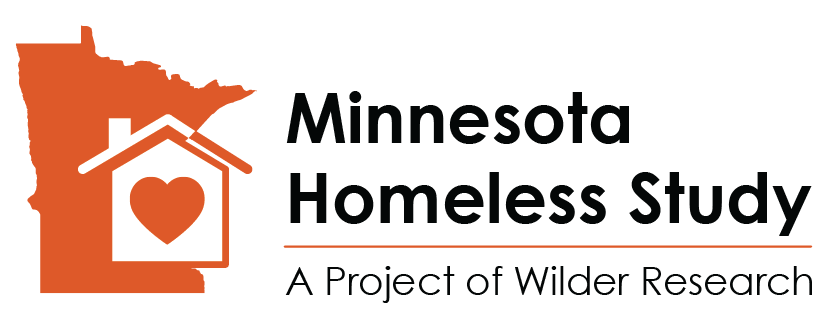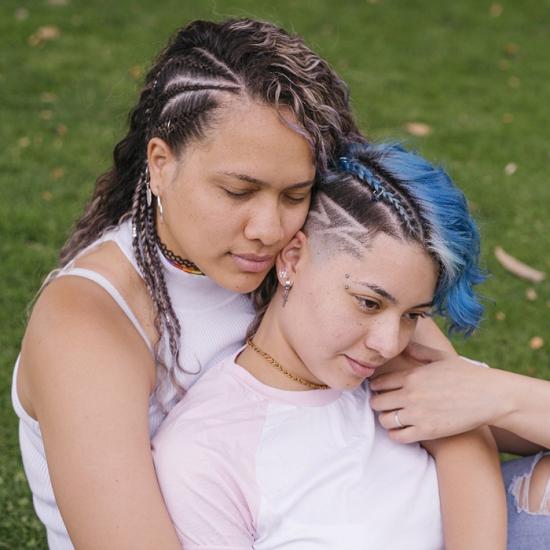
People Who Identify as LGBTQ
Homelessness among lesbian, gay, bisexual, transgender, and queer people
As part of the 2018 study, Wilder Research analyzed a subset of the overall population: lesbian, gay, bisexual, transgender, and queer (LGBTQ) people experiencing homelessness.
11% of people interviewed for the 2018 Minnesota Homeless Study identified as LGBTQ.
KEY FINDINGS about LGBTQ Minnesotans experiencing homelessness
LGBTQ people are disproportionately represented within Minnesota’s homeless population.
Out of the more than 4,000 people interviewed for the 2018 study, 440 respondents, or 11%, identified as LGBTQ. The percentage of all Minnesotans who identify as LGBT is 4%, suggesting that LGBTQ people are over-represented in the Minnesota homeless population. A total of 67 respondents identified as transgender or gender queer (2% of all homeless respondents; 15% of LGBTQ respondents).
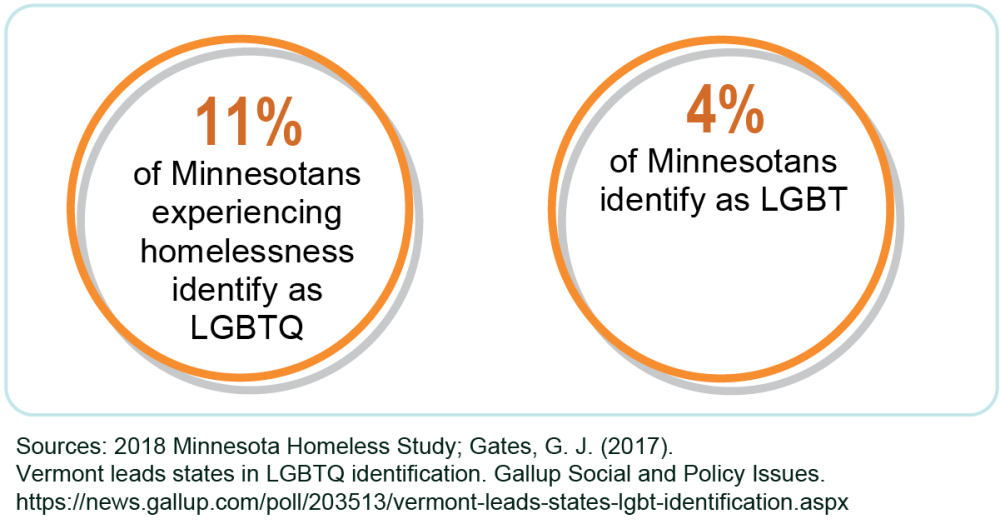
Read reports from the 2018 Minnesota Homeless Study
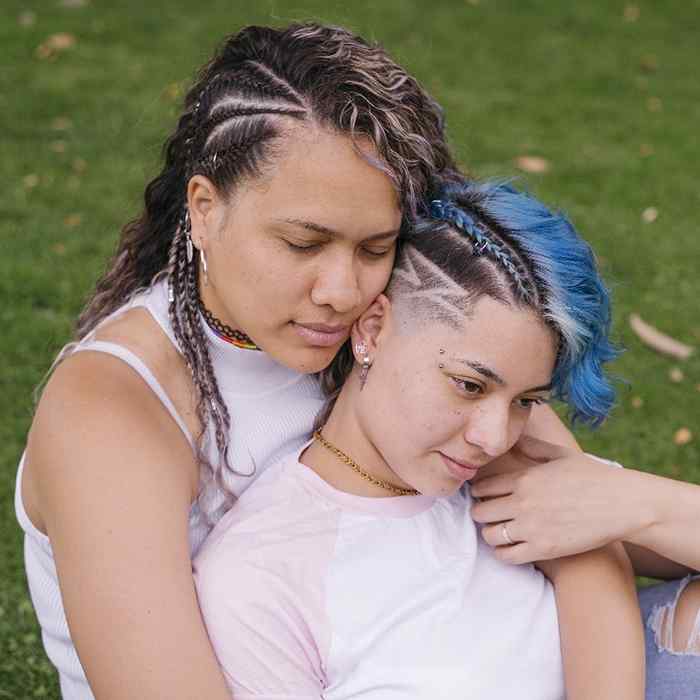
LGBTQ Minnesotans Experiencing Homelessness
This report provides a comprehensive picture of homelessness among LGBTQ Minnesotans, including data and analysis previously unreported in other studies locally or nationally. Read the report »Among the homeless population, the proportion of people identifying as LGBTQ is higher among youth.
The proportion of homeless respondents identifying as LGBTQ varied by age. Out of all homeless youth age 24 and younger, 23% identified as LGBTQ. Comparatively, 9% of all homeless adults age 25-54 identified as LGBTQ, and 3% of all homeless adults age 55 and older identified as LGBTQ.
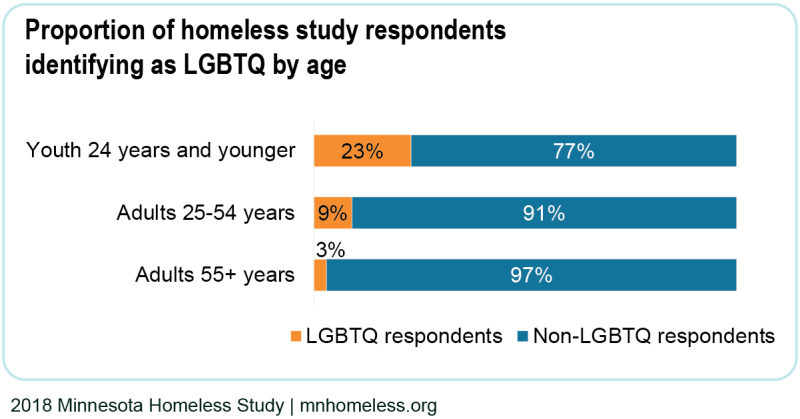
LGBTQ people experiencing homelessness most often lost their last housing because of financial and interpersonal reasons.
Overall, those who identified as LGBTQ reported similar reasons as non-LGBTQ respondents for leaving their last permanent housing; the most common were related to financial and interpersonal issues. LGBTQ respondents said they lost their last permanent housing because:
- 38% said they were evicted or their lease was not renewed
- 37% said problems getting along with the people they live with
- 36% said they could not afford their rent or house payments
- 32% said abuse by someone they live with
Those experiencing homelessness who are Indigenous or a person of color and identify as LGBTQ face compounding and systemic discrimination.
Similar to the non-LGBTQ homeless population, 68% of LGBTQ respondents identified as African American, Native American, Hispanic, Multiracial, or Asian, meaning that there is an overrepresentation of Indigenous and people of color within the homeless population, regardless of their gender identity or sexual orientation.
Higher proportions of LGBTQ Indigenous and people of color had spent the night on public transportation in the past 12 months (40%, compared to 29% of White LGBTQ people experiencing homelessness) or had been turned away from shelter in the past three months because it was full (39%, compared to 30% of LGBTQ White people).
LGBTQ people experiencing homelessness have experienced high rates of trauma; this was especially true for LGBTQ youth.
Almost all LGBTQ youth (94%) reported at least one adverse childhood experience (ACEs; 81% of LGBTQ adults) and 70% had three or more ACEs (58% of LGBTQ adults). Especially prevalent ACEs were having a parent or guardian with mental health issues and witnessing abuse of another family member.
People experiencing homelessness who also identify as LGBTQ suffer higher rates of violence and exploitation than the overall homeless population.
Homeless respondents who identify as LGBTQ were more likely than non-LGBTQ respondents to report each type of violence, abuse, and sexual exploitation measured on the survey. This violence is both a cause of homelessness and can be a result of the unsafe situations in which homeless people often need to stay.
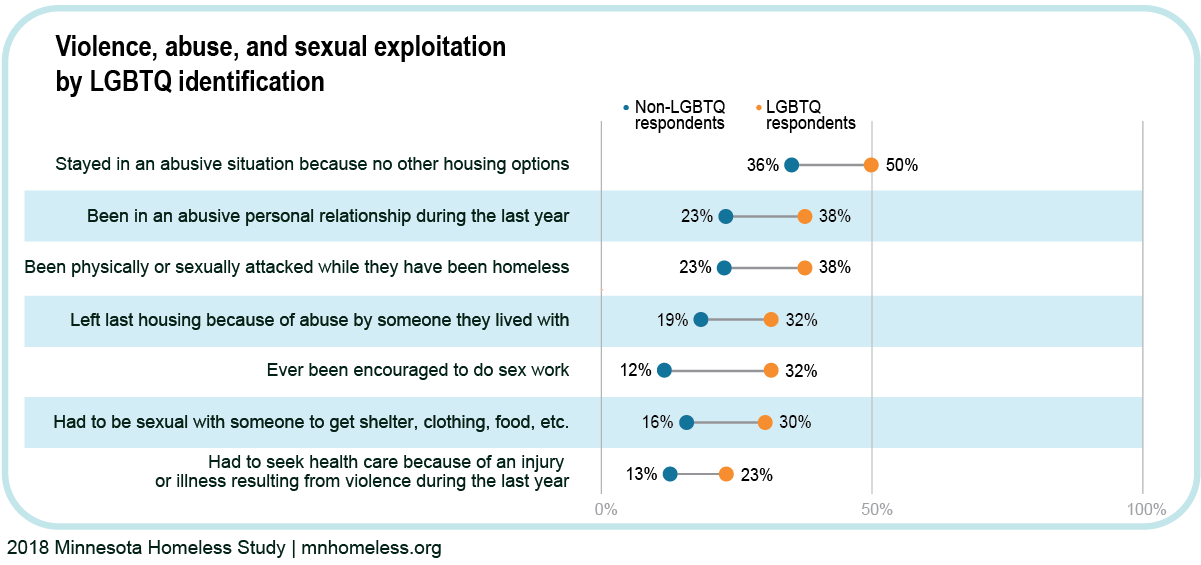
The majority of LGBTQ youth had a trusted adult in their life. Two-thirds reported a youth worker helped them find services in the past 12 months.
Eighty-two percent of LGBTQ respondents under age 20 reported having an adult in their life who they can trust and talk with about their problems. This was similar to the 76% of non-LGBTQ youth who reported having a trusted adult. For the LGBTQ youth under age 20 who reported there was an adult in their life they could trust, this individual was most commonly reported to be a friend or partner (36%).
